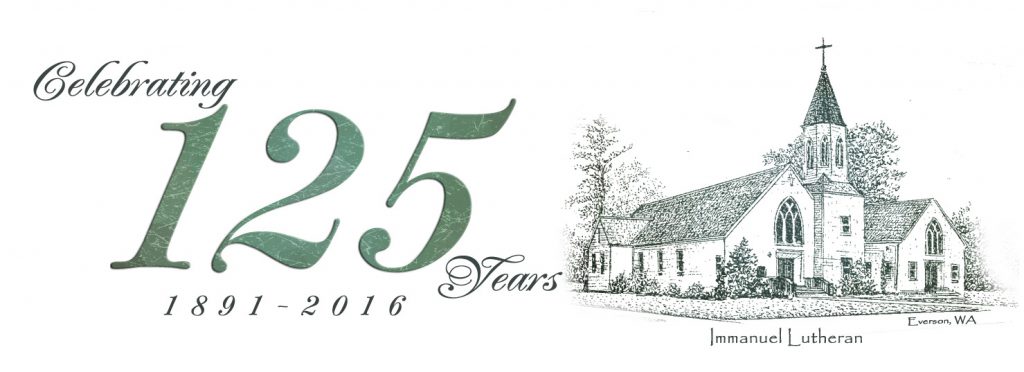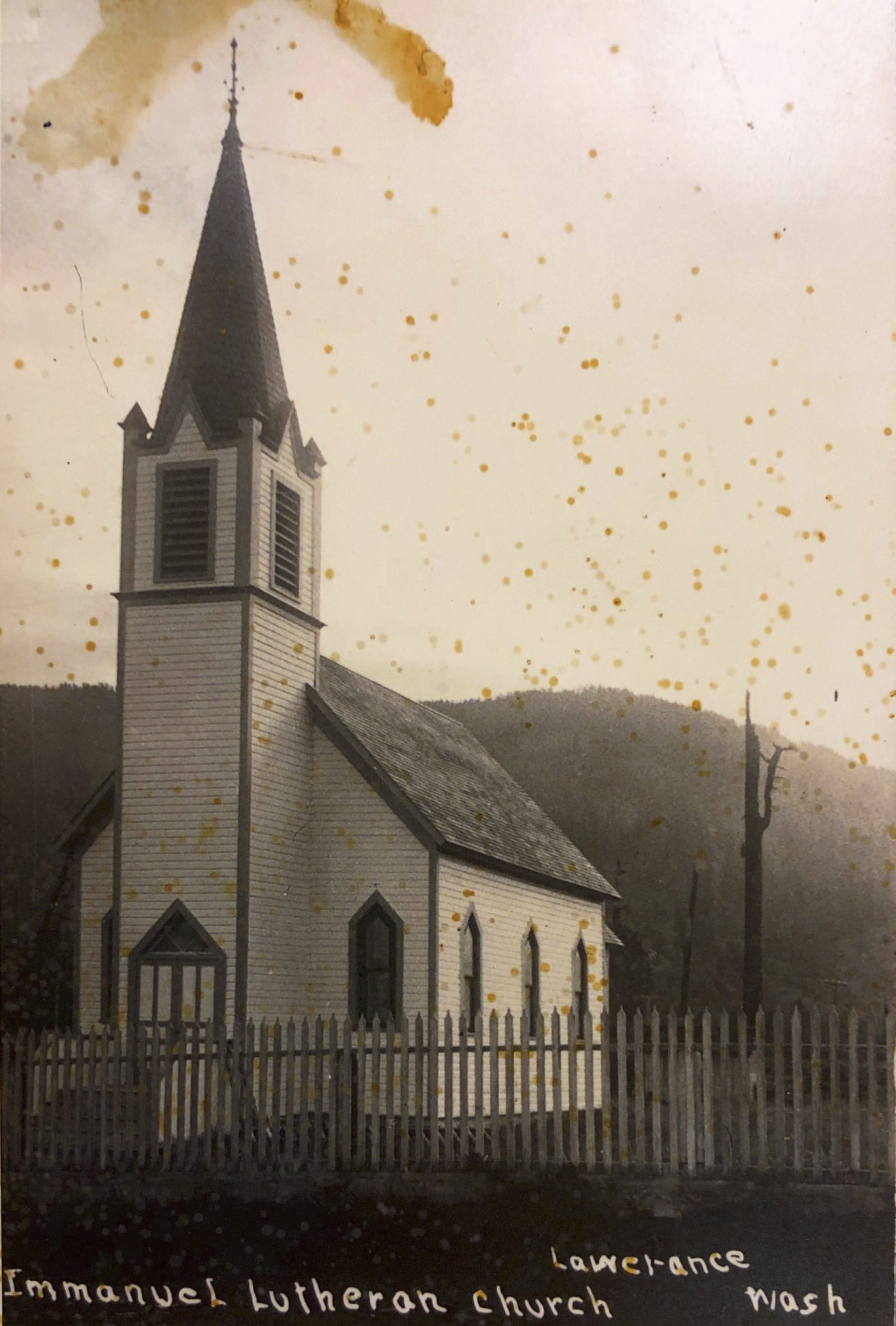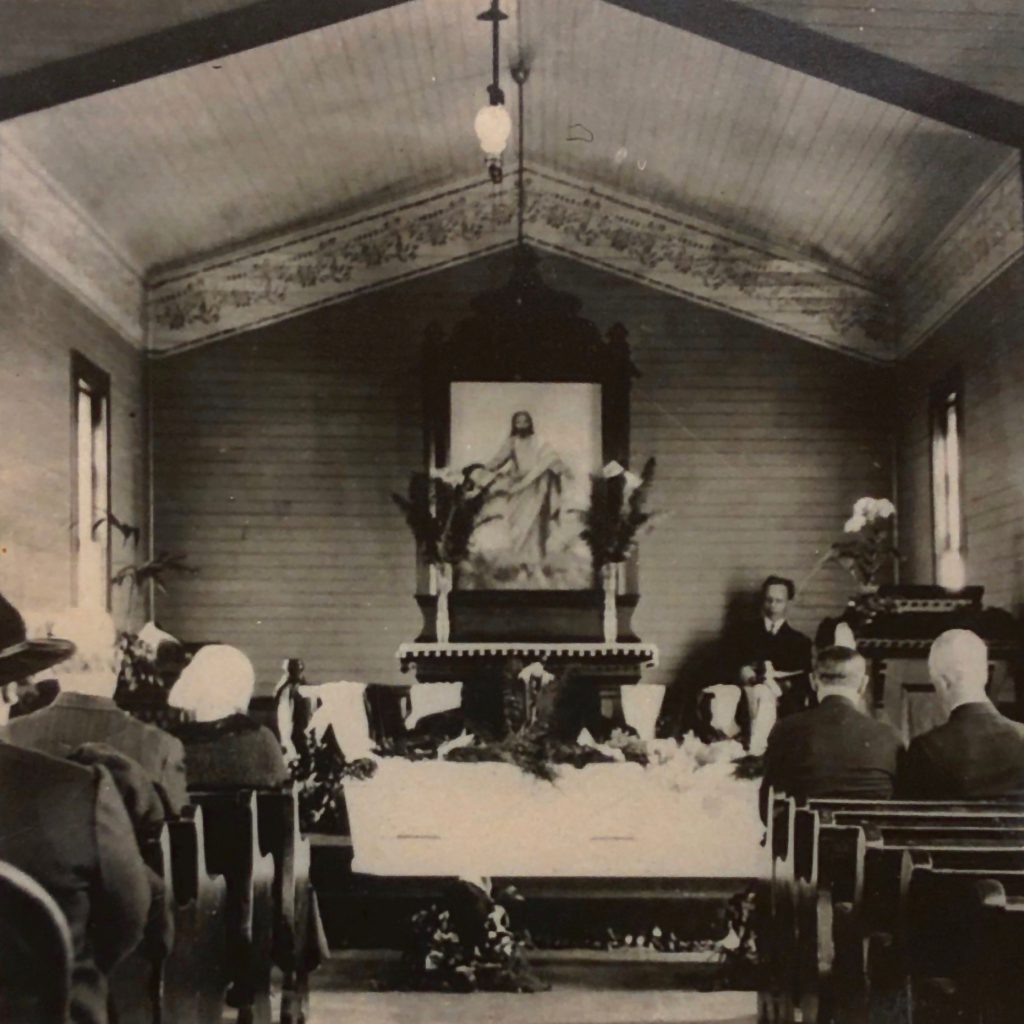Our History: 1880s and 1890s

The early pioneers of our church came by water to Whatcom (Now Bellingham), by team and wagon north along the Telegraph Road, by ferry across the Nooksack River, about one mile west of Everson, and then afoot or on horseback to the present site of the community of Lawrence. To take a homestead was their ambition, as they looked about through the virgin forest of cedar and fir, trying to select sites for their new homes.
Two brothers, Ole and S. S. Howem were among the first settlers to take a homestead. Ole Howem left Norway in 1872 and came to Oregon, where he lived until his brother arrived, and together they came to Washington Territory in 1883. Native Americans brought them up the Nooksack Rover from Everson by canoe. There they build their log cabins and began the great task of clearing the land. In 1884 Ole Helgesen and John Johnson, with their families, arrived from the East.
As early as 1887 Rev. Jorgensen journeyed north from Stanwood to visit small communities that were without a Lutheran pastor. He came to Lawrence, and his first service here was at the J. S. Johnson home. As travel was slow and difficult, he came only three or four times a year.
The work of Rev. Jorgensen led in 1891 to the calling of Rev. L. C. Foss, who was serving a congregation in Fairhaven, South Bellingham. The first worship service at Lawrence was conducted in the J. Johnson home by Pastor Foss on March 15, 1891. His memory will live long in our church, as he was so closely linked with its humble beginning.

First church, in Immanuel Lutheran Cemetery
Mr. Christian L. Tollum brought his wife and six children from North Dakota, arriving here on July 3, 1888. They lived for six months in a log cabin, until he was able to build a house on his homestead. The Ladies Aid was organized in November, 1891, in the Tollum home. The Ladies Aid acted as a helpmate in the congregation through the years. It helped pay for the lumber for the church, much of which came from the Blankenship mill. It also raised money to pay for the benches, built by C. L. Tollum and the pulpit altar ring and the first altar table, built by C. L. Tollum and Lars Howem. The baptismal font was made and donated by a son of Mrs. Sieverson, who lived on the Sand road.
Marie Tollum was the first baby baptized by Pastor L. C. Foss on March 15, 1891. After her confirmation, Marie was Sunday School teacher, superintendent, and organist for more than twenty-five years of continuous service.
Rev. Foss helped organize the congregation in 1891 and on January 7, 1892, the first constitution—written in Pastor Foss’ own handwriting—was read and adopted by founding members Ole Howem, C. L. Tollum, K. Bakkerude, H. C. Hoff, S. S. Howem, J. S. Johnson, Halvor Knutson, Hans Skjelstad and Ole Helgesen. The same year, plans were begun for a church. Pastor Foss was a good carpenter and, with the help of C. L. Tollum who came with his family in 1888, acted as chief carpenter. Though money was hard to come by in those days, there were many willing hands and the church was completed and dedicated in 1889.
Pastor Foss was given a saddle horse by Mr. C. X. Larrabee. The horse brought him from Whatcom (Bellingham); Nugent’s Ferry—its landing near the bridge that now crosses the Nooksack River at Nugent’s Corner—brought travelers across the river.

First sanctuary, altar painting by Mrs. Ward of Bellingham
The first confirmation was held in the church in 1893. There were five members in this class. The choir of fifteen singers met regularly for rehearsal. One being the tallest, held the lantern while they practiced songs from hymnbooks.
In 1895, Rev. O. Hagoes was called. He also received a horse from Mr. Larabee and lived one and a half years with Mr. and Mrs. Skjelstad, who had purchased forty acres from the S. S. Howem homestead. In the meantime several other settlers had arrived from the East and from Norway. These included Lars Howem, who acted as secretary and pastor’s assistant from 1897 to 1922 continuously, and until English-language-only was adopted in the church services.

